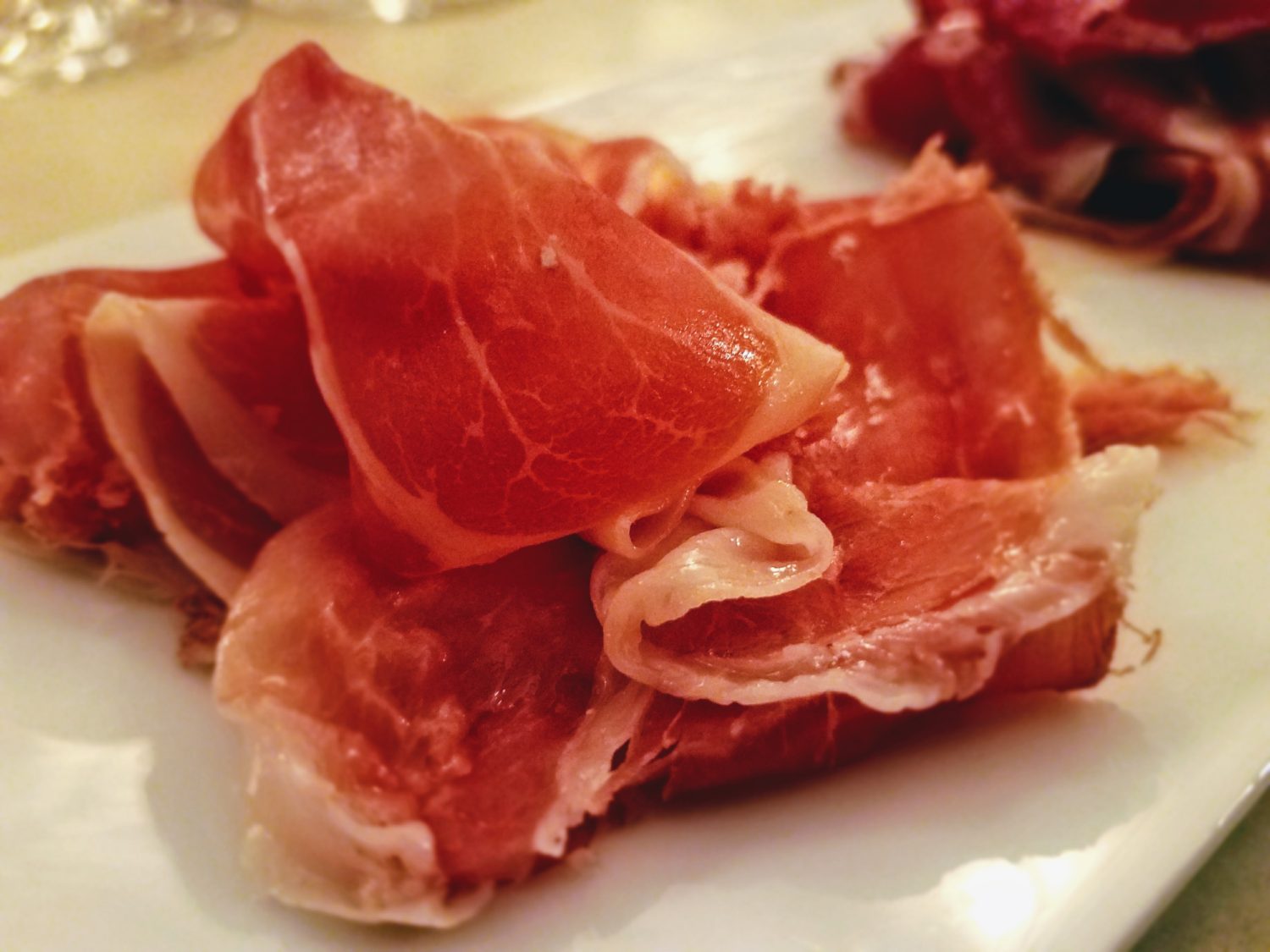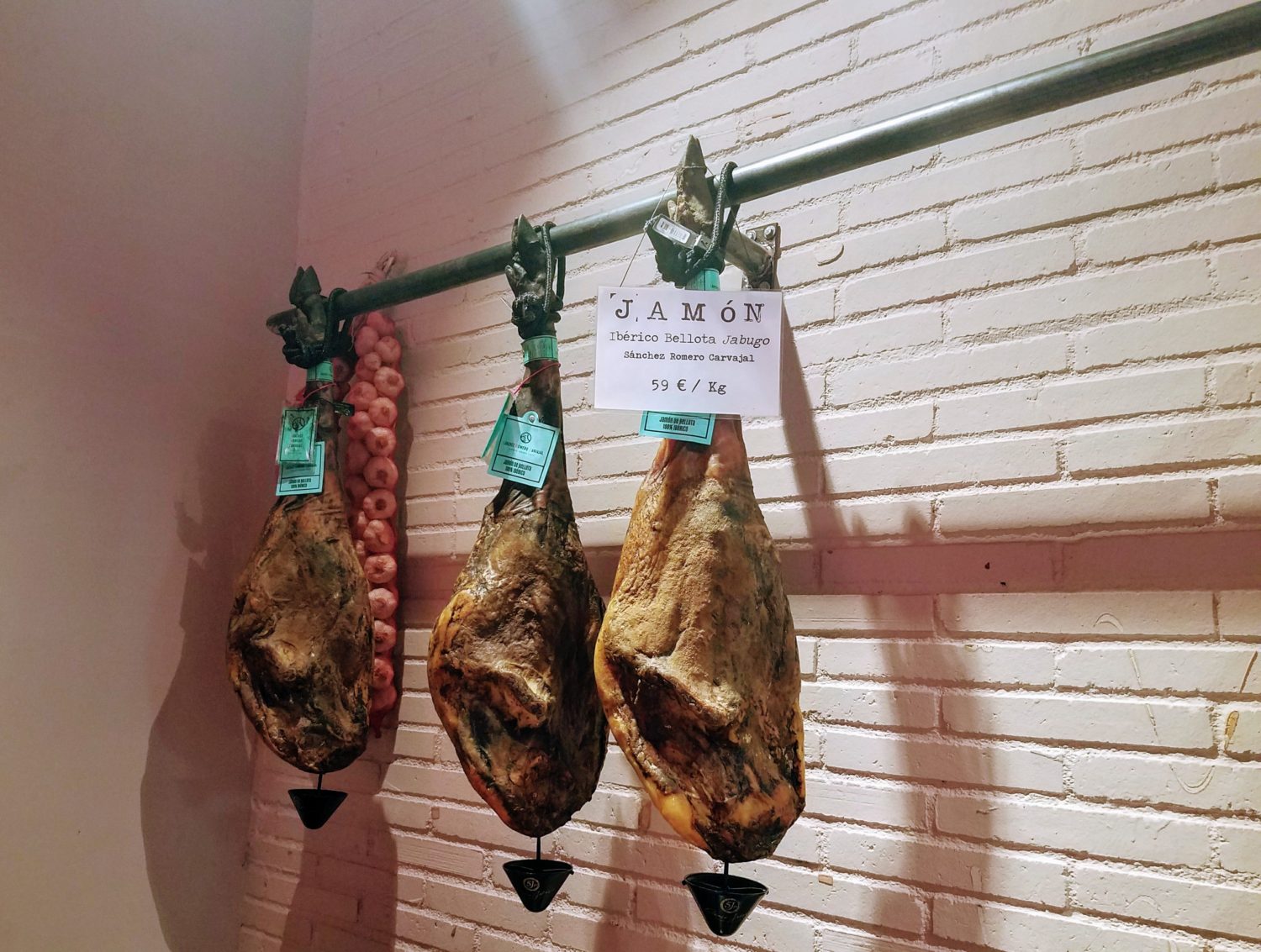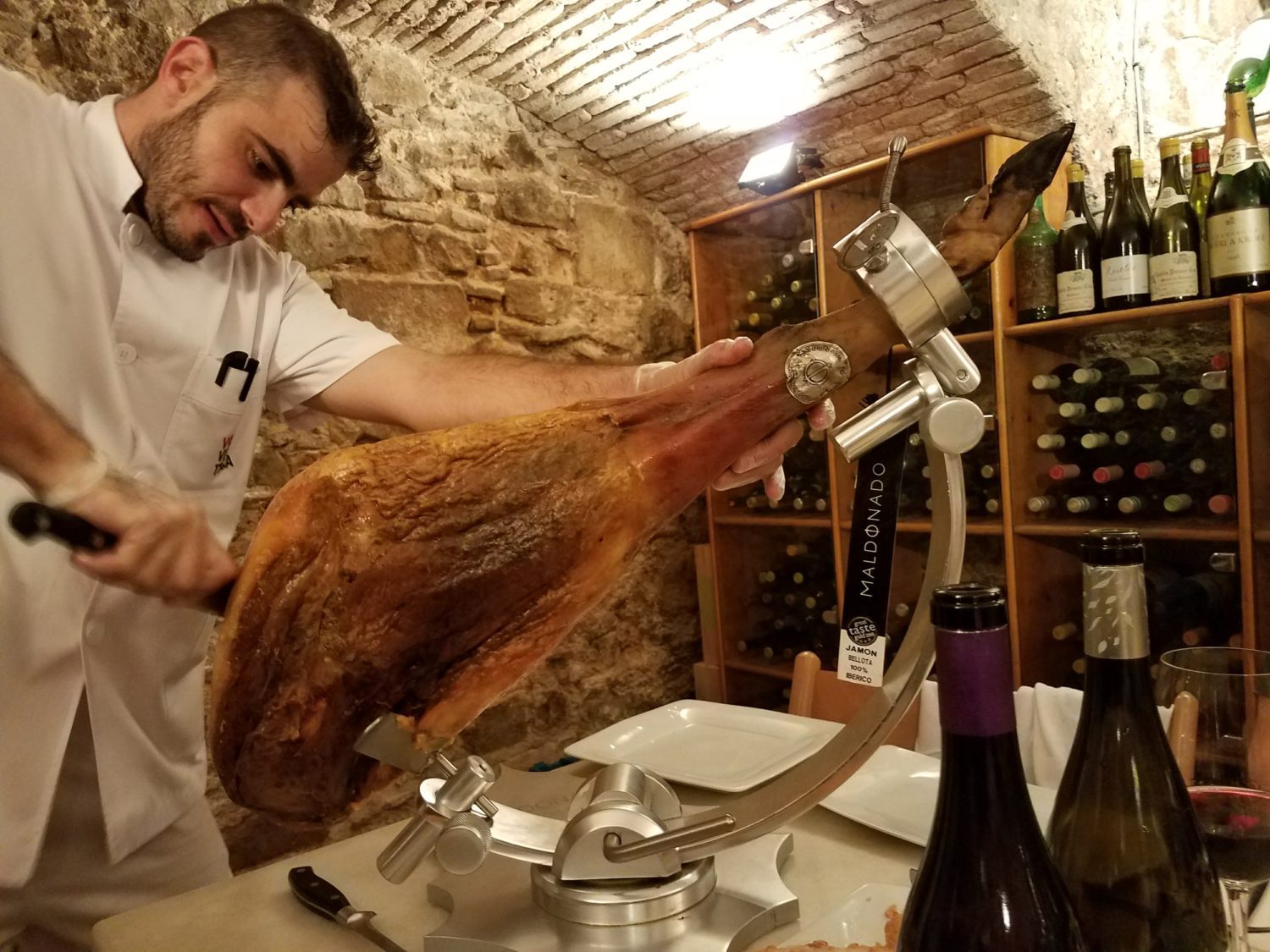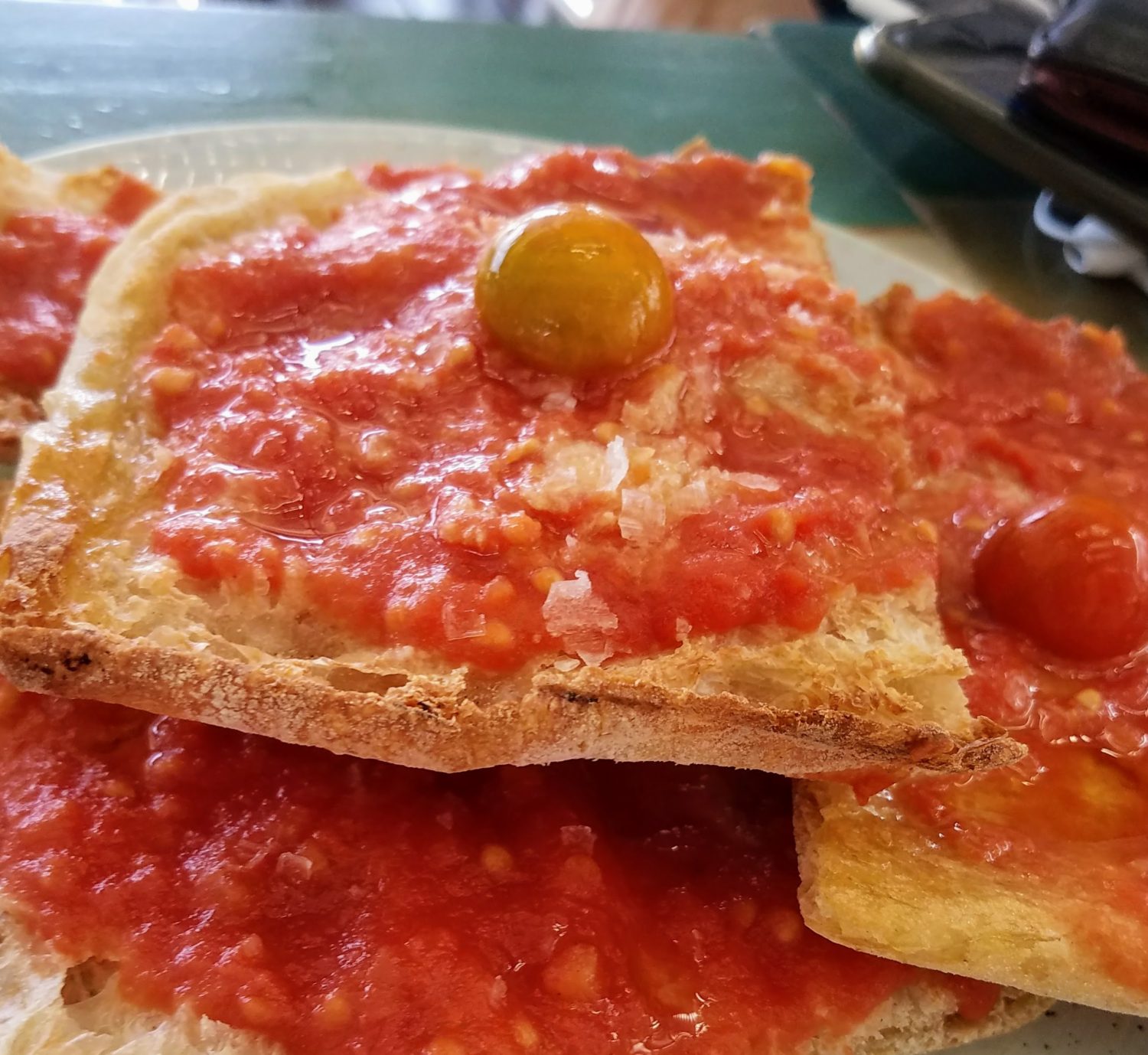Would you pay over a thousand dollars for a full ham? Or even twenty dollars for a single ounce?
Well, you might if it’s jamón ibérico. Frequently called “the best ham in the world,” here’s what makes this unusual Spanish delicacy so special—and expensive.
Ibérico: One-of-a-Kind Flavor
Served in paper thin pieces, this premium ham has an elegant sweet and nutty flavor, with an earthy undertone. The fat is rich and delicate; it will begin melting at temperatures as low as seventy-five degrees when properly sliced. And because the best cuts are so well marbled, it creates a sense the ham is literally melting in your mouth.
The result? Heaven on a plate.

The Process: Creating the World’s Best Ham
Porqueros act as herders, leading a sounder of Ibérico swine to and from acorn-rich locations on a dehesa. Many of these dehesas are centuries old, having been originally created as oak-studded pastoral grounds by the Spanish monarchy.
For roughly two years, the pigs graze on the natural bounty provided by these dehesas. But the secret is nuts. As in, a literal bounty of acorns dropped from oak trees spread throughout the land. From October to March the pigs feast on these tiny morsels, packing on intra-muscular fat and flavor.
Once they fully mature (a weight of around three-hundred and sixty pounds), the pigs are sacrificed—“slaughter” being a taboo word in the world of jamón. They are then carved into assorted parts, with the fatty legs being skinned, salted, and dried before being sent to cure for a year or more.
The Real Secret: Ibérico Pigs
It’s believed that Iberian pigs landed on the Peninsula thanks to an ancient sea-faring race known as the Phoenicians. They’re thought to have brought domesticated pigs with them on their wide-ranging explorations. And the eventual interbreeding with native boars resulted in the genetic combination we know today.
Unlike the pink, curly-tailed farm swine of American storybooks, Ibérico pigs are dark. In fact, they’re near-black, right down to their hooves. This unusual hoof coloring helps distinguish between Ibérico and Serrano at a glance. Plus, it generated another nickname for this culinary delight: pata negra.

But what’s makes them kings among swine? Well, a few things.
As mentioned above, their pastoral diet stems almost entirely from acorns provided by three different local oak trees. This rich diet, combined with a genetic disposition for fat accumulations, creates plenty of rich marbling. And it’s this distinct marbling that creates the sweet, sinful, nutty, and decadent flavor people know and love.
Jamón Ratings: Diet and Ancestry Make a Difference
Each ham comes with a color-coded label certifying the pig’s ancestry and diet. A black label represents the top tier, with a 100% pure-blood ancestry and almost exclusive acorn-fed diet. Red, green, and white labels indicate a decreasing percentage of Iberian ancestry and dietary additions like grain.
To be labeled true “Ibérico,” the pig must hail from the region and be of at least 50% Ibérico ancestry. However, only 5% of the ham produced in Spain can claim to be the best of the best: both pure-bred and acorn-fed.

Slice of Life: How to Serve Jamón Ibérico
Another interesting characteristic of jamón ibérico is how it’s served. The leg is secured inside a unique holder, designed specifically for the purpose. It anchors the ham near the hoof and provides a resting place for the hock itself.
Once the layer of fat is removed from the top and sides, the meat sits exposed and ready to slice. A long, thin blade is used to cut near-transparent pieces, and the cut itself is difficult. Professionals train for years to be able to cut a slice with the perfect thickness. In fact, the World Record holder hails from Spain. Noe Bonillo Ramos sliced nearly one-hundred fifty-five kilograms of ham over the course of seventy-two hours, with a variance in thickness of less than a single millimeter.


Enjoy: Where to Find the World’s Best Ham
Many restaurants serve jamón alone, although it’s not uncommon to see it alongside traditional pan con tomate (toasted Spanish tomato bread). Usually, the easiest way to enjoy it is by finding an authentic Spanish restaurant, like Portland’s Ataula. They do a brisk business, and the volume they serve allows them to purchase the best quality at a negotiated rate.


You can also source it from high-end delicatessens around the country but be sure and inquire about the quality.
And finally, you can always take a trip to Spain and learn more about this interesting delicacy first-hand. Many places in Barcelona offer training courses to teach you to taste, identify, and slice jamón ibérico like a pro.
Savor it like the kings of old and raise a glass to the beautiful sacrifice on your plate.
Suggested reading: 3 Ways Other Countries Do Fries Better

